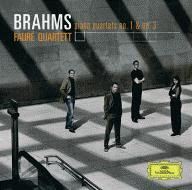San Francisco Symphony Welcomes New Opera Director, Nicola Luisotti
 Nicola Luisotti leads San Francisco Symphony in their latest concert
Nicola Luisotti leads San Francisco Symphony in their latest concert
This season we have seen a host of distinguished guests from far and wide on the conductor’s podium at Davies Symphony Hall. But one man in particular stands out for the prominent position he will soon occupy in the city’s cultural life. In its latest concert, the San Francisco Symphony was led by the charismatic Italian conductor Nicola Luisotti, who has been named as San Francisco Opera’s next music director.
The stylistic variety of the program offered ample proof that Luisotti’s musical skills extend far beyond the realm of opera. The concert had a pronounced ethnic flavor with Kodály’s “Dances of Galánta” followed by Bloch’s “Hebraic Rhapsody” with cellist Michael Grebanier. The evening culminated with a symphonic monolith of the Romantic repertoire—Brahms’ Fourth.
“Dances of Galánta” opened in a slow and lavishly orchestrated movement, evoking gypsy music with haunting melodies from ancient times. Traveling to the remote corners of his native Hungary, Kodály seems to have amassed an impressive collection of folk songs from various regions, which he brought back to life in an entirely new form through his ground-breaking orchestral techniques.
Each of the five dances was progressively livelier and more colorful than the preceding one, leading to an exciting and rhythmically invigorating finale. Since the individual movements were performed attacca (with no significant pause in between), the dances merged together in a kind of musical patchwork, not unlike a symphonic counterpart to Liszt’s familiar “Hungarian Rhapsodies” for the piano. Kodály’s “Dances of Galánta” feature an especially prominent part for the clarinet, which the symphony’s own Carey Bell played brilliantly. In comparison to other guest conductors, Luisotti seemed to take extra care to show his appreciation for the orchestra by acknowledging Bell and other musicians with important solos at length during the applause.
Grebanier Shines as the Voice of Solomon
Then came a stunning piece by Swiss-born American composer Ernest Bloch. Having served as director of the San Francisco Conservatory of Music, Bloch is forever associated with the Bay Area’s musical heritage. He also taught composition at UC Berkeley and was for a time a resident of Mill Valley.
“Schelomo”—Hebrew for Solomon—is a single-movement rhapsody for cello and orchestra inspired by Jewish texts attributed to King Solomon. The composer had originally intended the work for voice and orchestra, but could not decide on the language. He finally chose the cello over the human voice.
Bloch’s “Hebraic Rhapsody” clearly displays Jewish-inspired melodic motifs with the emblematic augmented second intervals of Middle-Eastern and Eastern European folk music. The work as a whole, however, contains no trace of any known authentic Jewish tunes.
Predating the golden age of American cinema by about four decades, “Schelomo” nevertheless evokes the rich orchestral sounds of the great Biblical sagas produced by Hollywood in the mid to late ’50s. In fact, much of the music for American films was written by European-born composers of Bloch’s generation, who may have shared some of the same formative influences.
San Francisco Symphony’s Michael Grebanier is no stranger to “Schelomo,” having appeared as the soloist ten years ago under Roberto Abbado. His sensitive interpretation conveyed at once majestic grandeur and gentle poetry, while bringing out the most soul-stirring tones a cello can produce.
Grebanier’s broad range of color—from his delicate overtone brush to his powerful and grainy bowing action—gave an especially vibrant voice to the fabled prophet-ruler of the Old Testament. A voice that elicited endless applause, multiple returns to the stage and a standing ovation fit for a king.
Luisotti’s Trump Card—Brahms’ Fourth
The final piece on the program, namely Symphony No. 4 by Johannes Brahms, was a worthy conclusion to an evening of successive symphonic delights. This highly dramatic and passionate work seemed especially well-suited to Luisotti’s musical temperament, and once again refuted any notion that he is strictly a conductor of opera.
Nicola Luisotti gave us a bold, extroverted Brahms with higher peaks and deeper valleys than most. While at times he seemed to physically draw out gushing symphonic waves with all his might, at other moments his conducting was distilled to the subtle movement of his head during the instrumental solos.
From Brahms’ thick orchestral textures, Luisotti often brought to the foreground a melodic line or fragment that would otherwise have gone unnoticed, making the audience aware of the interplay among the many layers of music. If Luisotti’s rendition of music by Kodály and Bloch prompted the audience to sit up and take notice, his stellar performance of Brahms firmly earned their respect and admiration. From the first flick of his baton, Nicola Luisotti intrigued and fascinated the audience with his flamboyant, highly expressive conducting style. He brought a clear and evident measure of drama to the music being performed—perhaps a function of his operatic background.
It is almost a shame that such a uniquely rich gesticular vocabulary should be confined to the dimly-lit War Memorial orchestra pit come September.

Comments